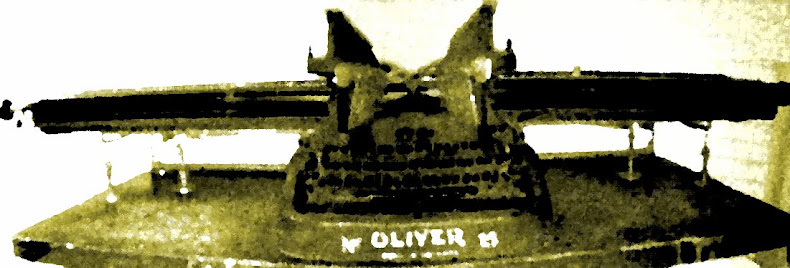According to some senior fellow collectors, in the old days Breker mainly sold typewriters. Now they sell almost any office equipment but typewriters. Of in total 707 objects, only 18 included typewriters. I wanted to have a go for the Pittsburg 10, but after inspecting it before the auction, I decided it wasn't worth the opening bid of 280 euros: it was rusty and defect.
One of the first lots under the hammer was an Enigma Type A (estimate 15.000-25.000 euros), which was sold for a staggering 35.000 euros. And this was only "one of the highlights"! Just one minute later we discovered why there were so many cameras filming the event: a real Apple 1 was up for sale (estimate 120.000-200.000 euros).
 |
| The Apple 1 |
The opening bid was 70.000 euros. Two anonymous phone-bidders were really going for it and within moments the 200.000 euros barrier was passed. The tension in the room increased with every increment of 20.000 euros. It was only at 400.000 euros (!) that one of the bidders had to pass. When the item was hammered down we applauded, hardly believing what we'd just witnessed. I wonder who bought the item!
Here is a video about today's auction of the Apple 1 (in English).
After half of the public and all cameras had left the room, the typewriters were up for auction. Three very nice colored Underwood portables were sold for only 100 euros: a Smith Premier 1 reached a hammer price of 240 euros; a beautiful Crandall remained unsold (opening bid 3.800 euros), and "my" Pittsburg changed owners for 750 euros. Way too much if you ask me. Here you can find the list of all realized prices. Scroll down to item 66 and onwards to see the typewriters.
After the auction, Jos Legrand advised me to drive to a meeting of German typewriter collectors at the local Tennis Club. He told me some collectors would sell typewriters out of the trunk of their cars. I expected to find some Coronas/Underwoods/Remingtons, and maybe (if lucky) some Blicks, Yösts or Hammonds. Well... I was wrong!
There were around 20 or 30 cars with each around 5 or 10 typewriters. I spotted a Blickensderfer, Oliver, Densmore and Franklin in the first car. That was promising! I started walking and could not believe my eyes: a Columbia 2, a North's, a Fitch, a Gardner, all in open car trunks, barely protected against the cold German weather... The Fitch (my dream machine) had a 13.000 euro price tag. I wonder whether there were people walking around there ready to pay that kind of money out of their pocket.
Inside the Tennis Club I met Wolfgang Mock and Norbert Schwarz of Historische Bürowelt (HBW). I bought all 80-something past issues of HBW from Wolfgang and subscribed as a member (I guess I really have to improve my German now).
In the back of the room, three fully restored typewriters were standing on a table: a North's, an Emerson and a Sholes Visible, all in mint condition (or even better). After following Richard Polt's very entertaining and interesting blog series about the restoration of his Sholes Visible, I couldn't resist asking the owner to give me a live demonstration of the mechanism of this beautiful typewriter. Now I finally understand how it works! The owner, by the way, appeared to be Hermann Kerz, who has restored many typewriters to mint condition. Very impressive.
It was very nice to have witnessed a real offline auction, but I think next time I'll drive directly to the meeting of German collectors. I didn't know there are so many fellow collectors on such short driving distance. Ah, and next time, I'll definitely bring my camera...











.JPG)
.jpg)
.JPG)
.JPG)
.JPG)
.JPG)
.JPG)
.JPG)
.JPG)
.JPG)
.JPG)
.JPG)
.JPG)
.JPG)

.JPG)
.JPG)
.JPG)
.JPG)


.jpg)


















